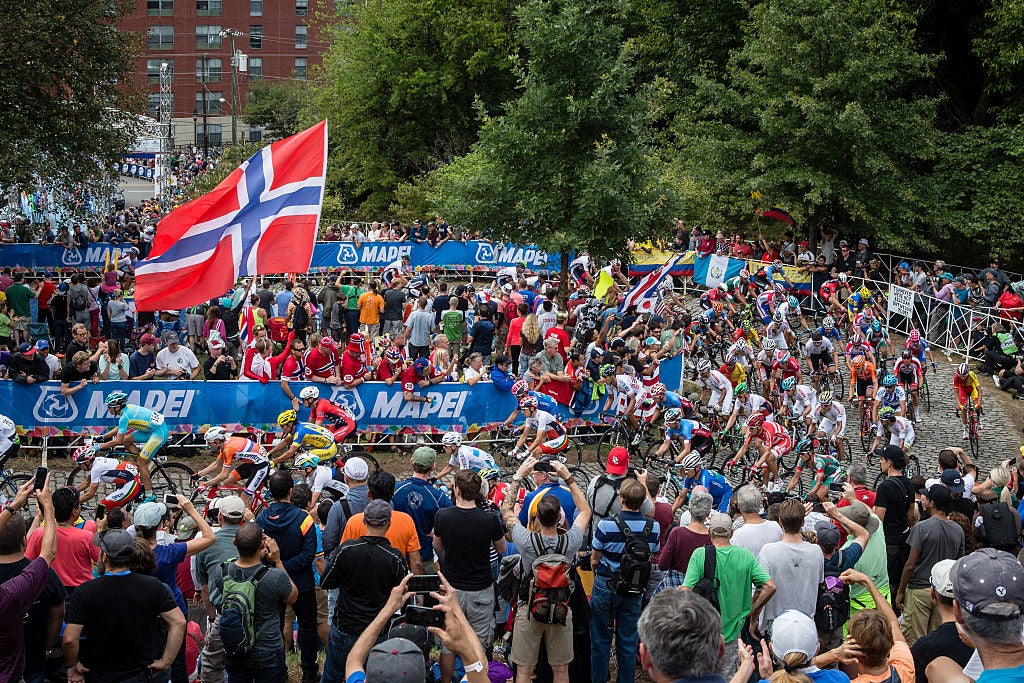What happened when the world came to Richmond, Virginia 10 years ago for the UCI Road World Championships?

RICHMOND, VIRGINIA – SEPTEMBER 27: The peloton hits a sharp turn in front of thick crowds on the Libby Hill climb at the UCI Road World Championships on September 27, 2015 in Richmond, Virginia. (Photo by Jonathan Devich/Getty Images) (Photo: Jonathan Devich/Getty Images)
Updated October 4, 2025 06:55AM
Richmond, Virginia, is at its finest when it’s overcast.
Sure, it’s lovely when the sun illuminates the dozens of shades of green among the canopies of the old trees that line every street. The murals – many fading over the years of gracing the city’s’ facades – shine a bit brighter, too. When the sun comes out, the James River, which cuts through the city as it turns from a rock-filled river to a large brackish tidewater channel, starts to glint beneath Richmond’s modest skyline.
Conversely, when it is grey above, the city has a more grungy attitude that feels more fitting for a city that has lived so many life-cycles through its almost 300-year history. With a grey sky, Richmond’s unique personality cuts through the romantic feeling the city holds when the sun shines.
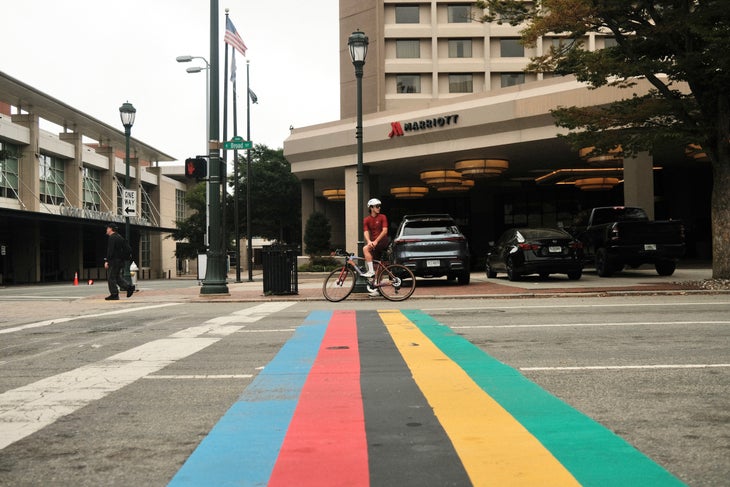
“It’s almost cold,” my friend Paul Davis told me as I rolled up to a coffee shop on the west side of Richmond’s city center. It is, in fact, not cold. It is a nice 70 degrees Fahrenheit, but it also wasn’t the normal September weather of a 90-degree high and the sun shining through a humid haze.
Nevertheless, the weather was fitting for remembering a similarly gloomy Richmond day 10 years prior at the 2015 UCI Road World Championships.
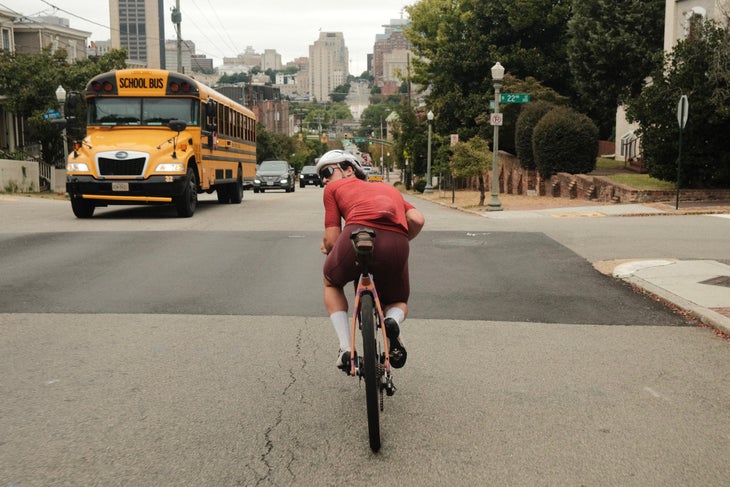
Perfect weather, in fact, to take a lap around the Richmond course for some photos to celebrate the event a decade after the fact. Like so many others, that weekend a decade ago shaped our collective memory of the city and our love of the sport of cycling.
On a personal level, it is also a moment that in so many ways has led me to my position as a cycling journalist writing this story today. And every year September rolls around, the feeling of affinity I have for that memory grows stronger, even if the impact of the race on the larger world diminishes.
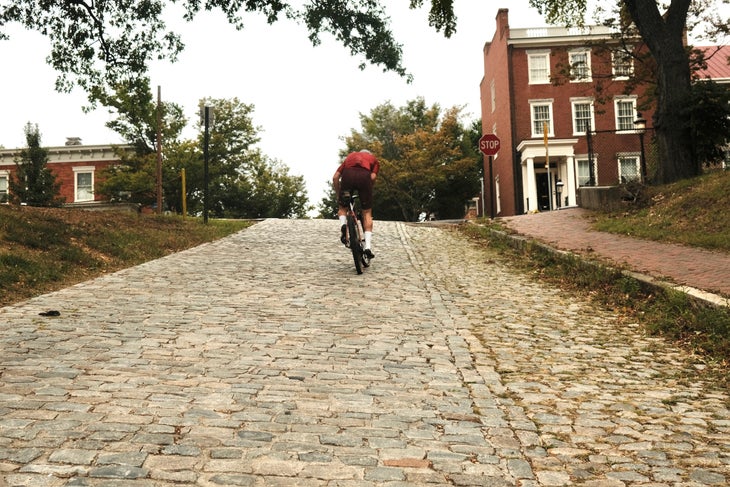
Yet, a 10th anniversary gives a moment to take a breath and celebrate what was before the memory fades, even if, in the meantime, the world has sped on.
Why Richmond? The right people in the right places
Sometimes, one name will just keep coming up. Throughout the process of looking back a decade to the Richmond World Championships, Lee Kallman was the name on everyone’s lips as the person I should speak to next.
“I was by no means the only person there,” Kallman said with a slight chuckle. “Six of us were full-time within this organization, and four of us were from the very beginning. Then, there’s just an endless list of stakeholders to get this thing across that proverbial finish line.”
Nevertheless, that is putting his role a bit lightly. Kallman was in charge of the commercial aspects of the mammoth task to bring the UCI road world championships to Richmond, Virginia, in 2015. Marketing, financing, and fundraising all ran through him.
“I had done a couple of things in sports earlier in my career, but at that point, I had vowed I would never work in sports again,” he said. ”In 2010, this initiative started to get off the ground, and I was consulting on the side as the group was submitting a bid. Then, the next thing you know, we won the bid, and it became a job. Four years later, we had the event.”
That was the short version, Kallman said, but in those broad strokes that cover hundreds of tiny decisions was the one central principle the organizing committee never seemed to doubt: Richmond, Virginia, would play a great host.
“The sport in an American big city is just gonna get drowned away,” he said of the effort to bring the race to Virginia’s capital. “Richmond was an optimal-sized market in that we don’t have a lot of professional sports, certainly not top-tier American professional sports, but we’re big enough to actually accommodate something of that size and scope.
“Then there is the community itself, with an event like worlds taking on some significant mind share. It is a big thing that could give Richmond and Virginia some real international visibility, which it ultimately did.”
A Cav collaboration
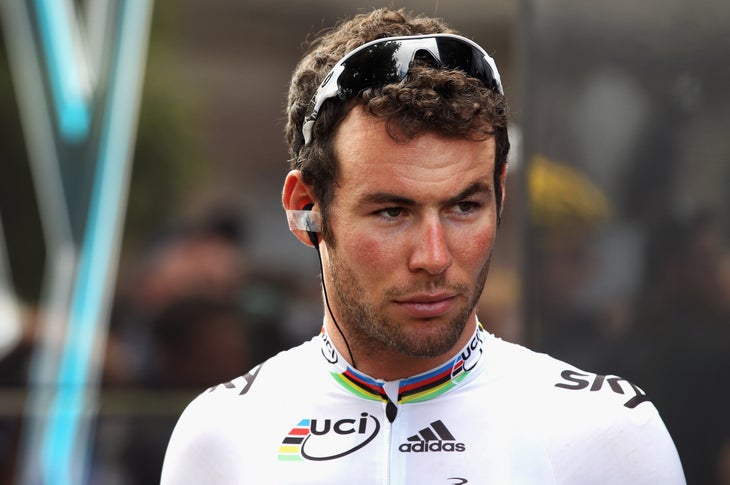 The 2011 world road race champion Mark Cavendish ended up playing an important role (Photo: Bryn Lennon/Getty Images)
The 2011 world road race champion Mark Cavendish ended up playing an important role (Photo: Bryn Lennon/Getty Images)
What Kallman and his team were banking on was Richmond Worlds clicking with the greater Richmond area. In the 2010s, Richmond was gathering momentum. Businesses across the city were on the rise. The downtown area, in particular, was quickly gaining momentum as the urban core attracted more businesses and young professionals.
What this meant for pitching an idea like worlds to both the city and the sponsors went two ways. First, with a growing local population, plus a huge portion of America’s population a short trip away, the event’s capacity to bring in those non-cycling fans was the center of any commercial initiative around the championships.
“From day one, we went in with the idea of how to make this something that would capture the attention of the people who don’t know anything about the sport. The people who care about the sport are going to come to worlds. The idea was, how do we get people who live within two hours of here that aren’t cycling fans to come?
“That was certainly a huge reason why we were able to raise the money that we did. It wasn’t that people cared about bike racing; it was this idea of a giant event in the community and the value that that could bring to the region.”
Simultaneously, the city and state economic development offices were seeking opportunities to attract international investment as a low-cost alternative to the larger economies to Richmond’s north. With the city and state placing emphasis on attracting international business, the race held international credibility that American sports couldn’t generate.
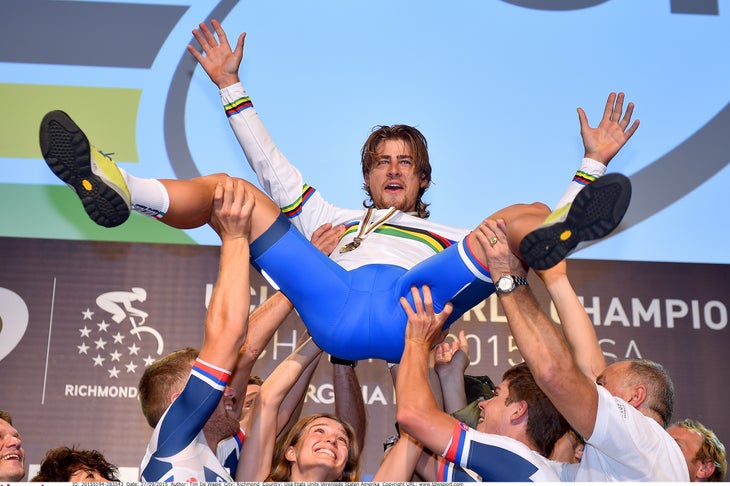 Peter Sagan won the elite men’s race at the Richmond world championships (Photo: Tim De Waele)
Peter Sagan won the elite men’s race at the Richmond world championships (Photo: Tim De Waele)
“In May of 2015, right after the Tour of California, Mark Cavendish came to Richmond to check out the course, and we ended up recording a video of him talking about the course and how great the city is,” Kallman said of how the organization tried to achieve these two goals.
“The week after he was here, I’m talking to somebody in the governor’s office, and the governor had a trade mission to the UK. I’m telling him about how this video would go a long way in that mission. Of course, they were still familiarizing themselves with the event, so I had to convince them to show the video as part of the trip.
“I ended up getting a text message from one of the governor’s lieutenants right after saying how that was huge because they didn’t have any sense of who Mark Cavendish was or how huge he was in the UK. That gave them great credibility when he talked about how great and hospitable Richmond was. That was just adding fuel to the fire.”
Kallmen kept coming back to this notion of fuel to the fire. Along the way, that was his goal: add fuel to the fire until it was hopefully a bonfire when the time came to race.
Boy, did that fire rage.
Riding through the nostalgia of the Sagan era
Paul and I wheeled across our last stop on our lap around the Richmond course on Broad Street in downtown.
It is not a place Paul goes very often as a Richmond resident. I sublet an apartment a few blocks down before I started college six years ago, but since then, the only time I ever got around to that block was to ride by to get a glimpse of the old finish line. It’s still marked by a thick strip of rainbows, cutting across the four lanes of traffic amongst the hotels and conference centers that downtown runs on.
It’s like so many finish lines in cycling, without the traveling circus that comes with the race apparatus. Nevertheless, so much else around the lap felt strange to consider with eyes that are 10 years older.
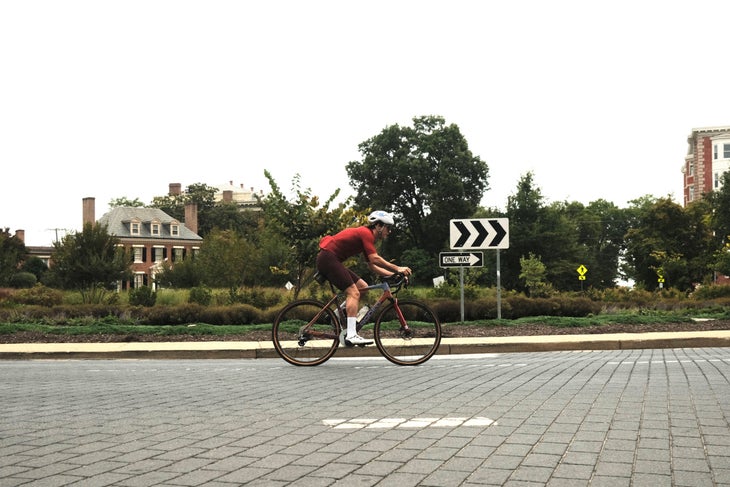
In our tour around town, the controversial Confederate monuments of Monument Ave., where the worlds course did an out-and-back on to avoid cutting across key thoroughfares, are long gone, replaced by new parks that haven’t quite hit maturity yet.
On the flip side, the other end of the course looked completely different. The old four-lane divided highway is gone. In its place is the end of the Virginia Capital Trail, a 50-mile cycling and running paved trail that was completed shortly after the 2015 world championships.
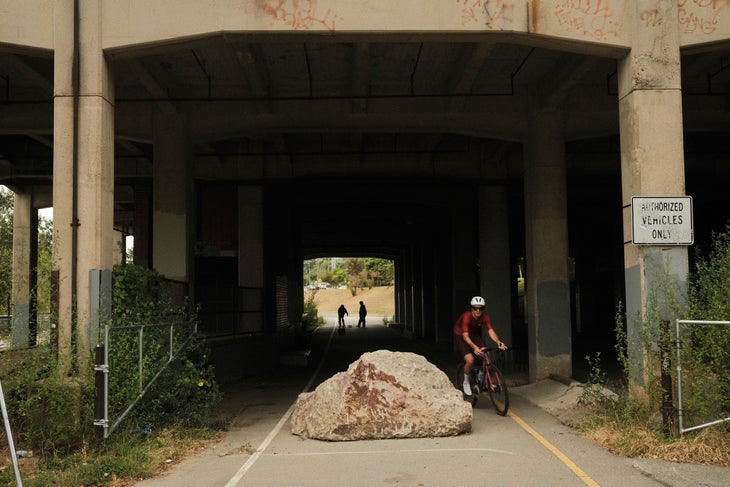
Beyond that, however, much remains the same in the decade since. Libby Hill has more grass poking through, and some of the roadways have improved tarmac, but all the parts are there for the nostalgia to come in waves.
Nostalgia for Libby Hill serving as an amphitheater with crowds hanging over the cobblestones of the road and big jumbotrons. Nostalgia for 23rd street and the canyon of noise that came every time the peloton climbed the steep cobblestone street that decided the men’s race. Nostalgia for Governor’s Street, which is now more of a parking lot than an actual street, where Sagan’s pedal slipped and the entire crowd groaned all at once.
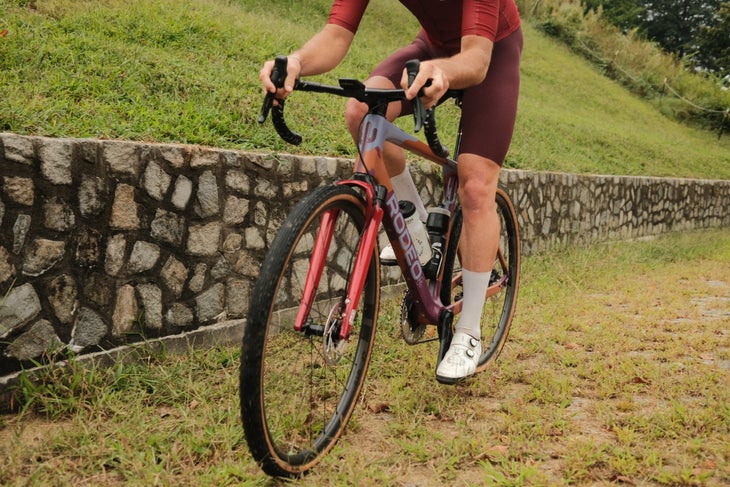
Paul has lived a lot of life since he was one of those rowdy spectators on Libby Hill. He moved away from Richmond and came back in those 10 years. He went from a fixie commuter to a full-blown cat. 1 cyclist in those years. He has gotten married and has had two children in those years. You wouldn’t have known from the amount he remembered from all those years ago.
It was definitional of his Richmond experience, which in turn has been a massive cog in his life — just as it has been for me.
And we were only watching it.
Ultimately, I left Richmond with less of a takeaway than I thought I would. I was hoping that my trip to Richmond would yield some skeleton key to how the race clicked into the American cycling community, or how it was this massive missed opportunity to capitalize on the momentum.
Leaving Richmond and after speaking to those involved in the race, it is hard to find any of those sweeping generalizations. Instead, my big takeaway was Richmond 2015 was almost boring. The racing was exactly what it needed to be – nothing more, nothing less.
Yet, the impact on those it touched is far from boring. For the right people, the event was life-changing; for the city of Richmond, it was massive.
It didn’t fix everything, it didn’t reverse the course of American cycling, but for love of the event and what it meant on a smaller scale, I can accept that as a success. It’s a roadmap that shows doing it all again in another city can be exactly what that city and its collection of cyclists might need.

